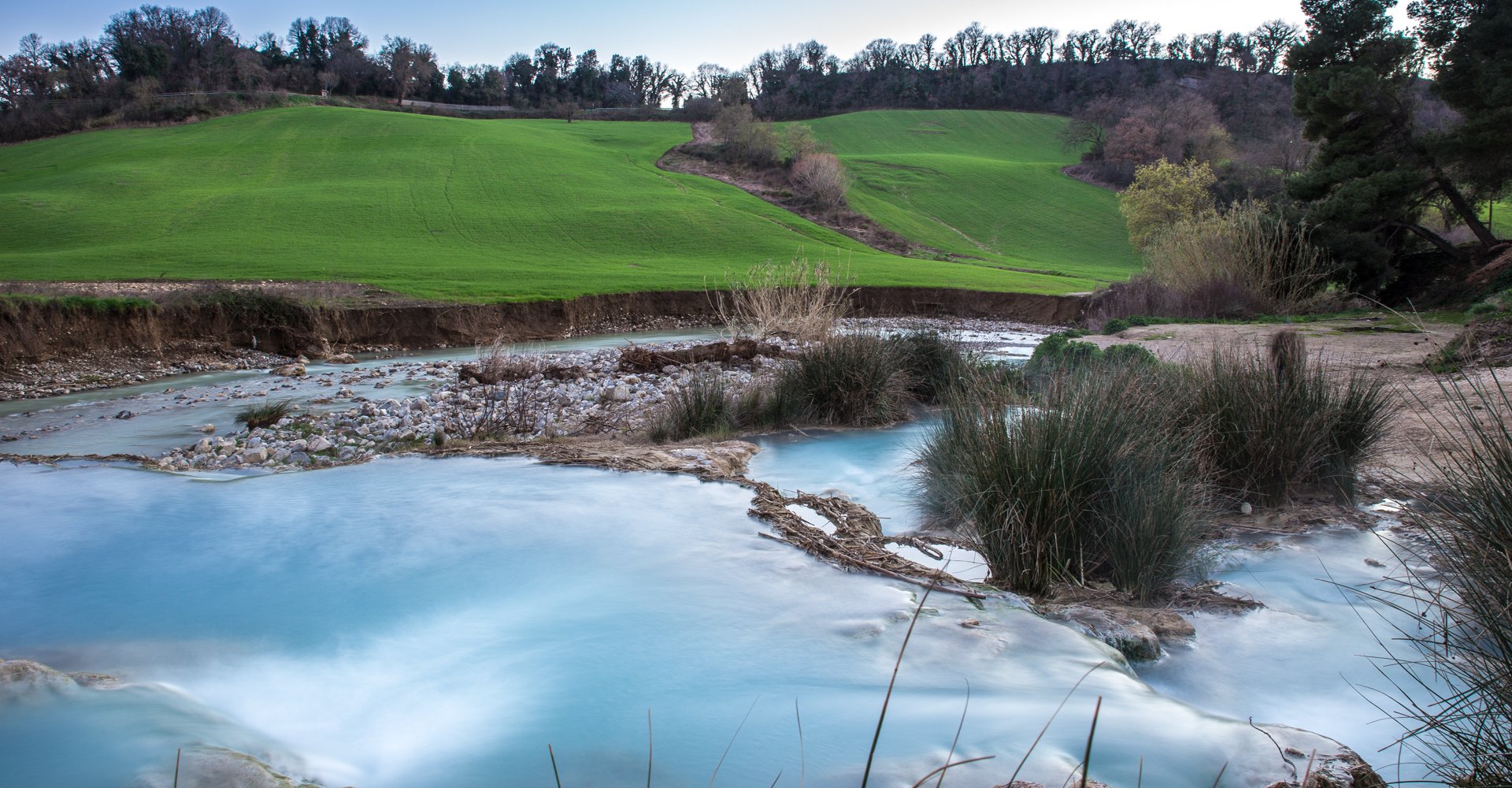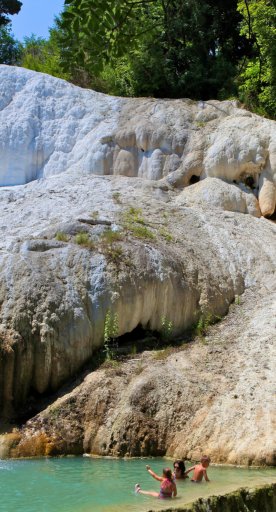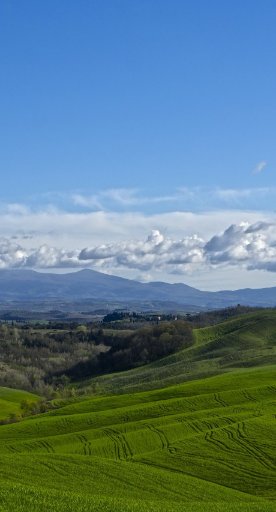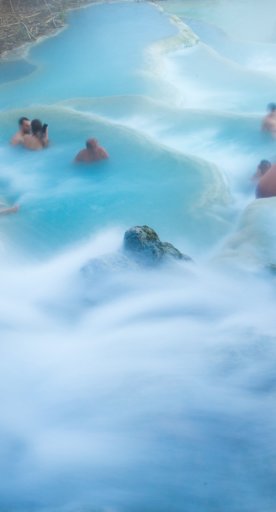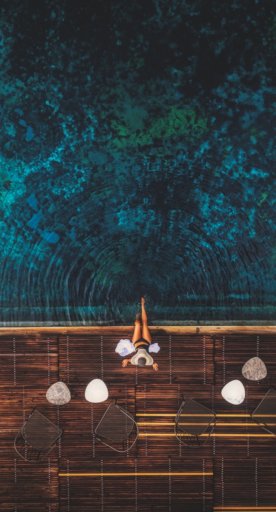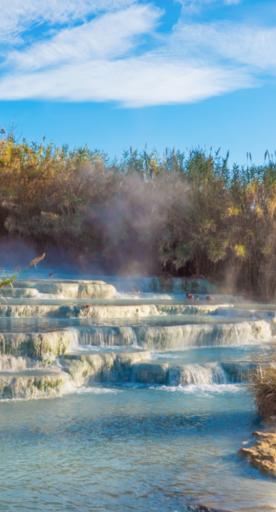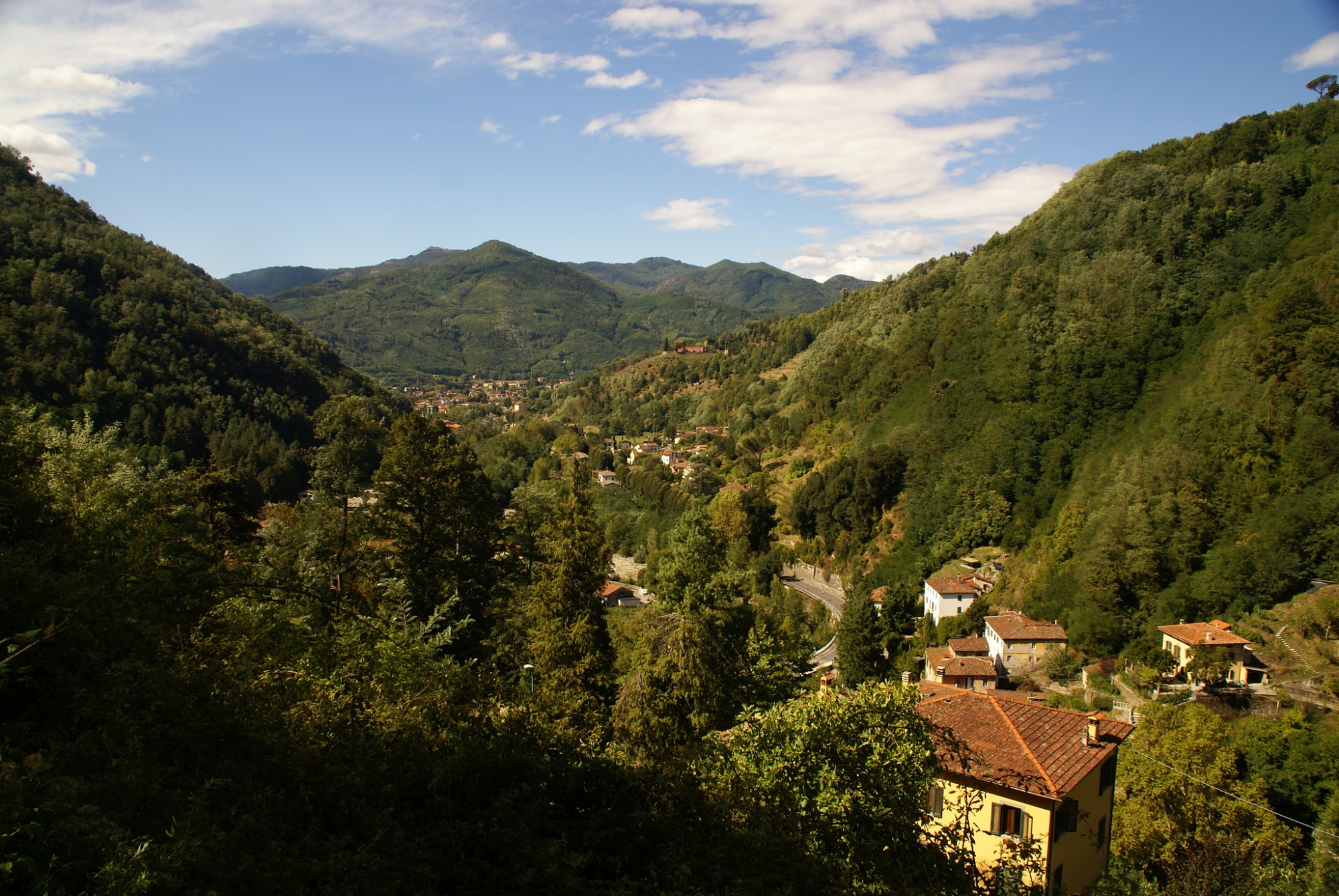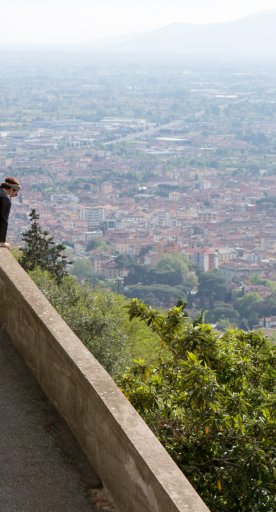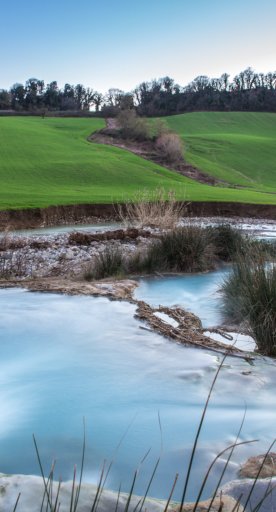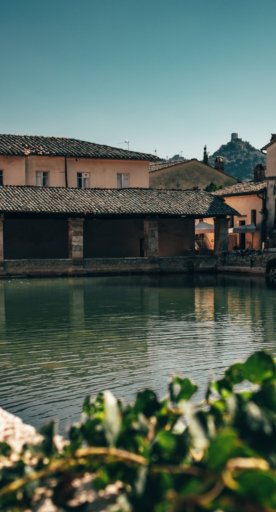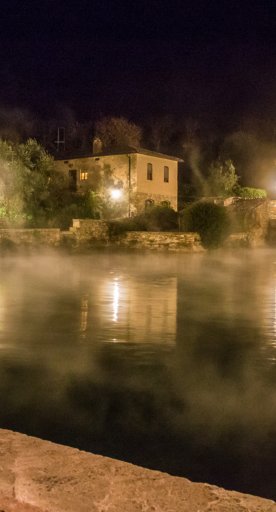The thermal spas of Tuscany
Wellness and nature among ancient springs and picturesque villages
Tuscany is a land where wellness has ancient roots—springs that have gushed for millennia, already known to the Etruscans and Romans, continue to this day to offer rejuvenating waters immersed in landscapes of extraordinary beauty.
From the tuff villages of the Maremma area to the hills of the Val d’Orcia, extending from the Crete Senesi to the Apuan Alps, each area holds a unique spa tradition where history, nature and relaxation unite.
Be it elegant resorts or free natural pools under the stars, Tuscan hot springs provide authentic and timeless experiences.
Let’s explore them together!
-
1.Southern Maremma
-
2.Val d'Orcia
-
3.Valdichiana Senese
-
4.The lands of Siena
-
5.The Etruscan Coast
-
6.Valdinievole
-
7.Garfagnana and the Media Valle del Serchio
-
8.The lands of Pisa
-
9.Apuan Riviera
-
10.Lunigiana
Southern Maremma
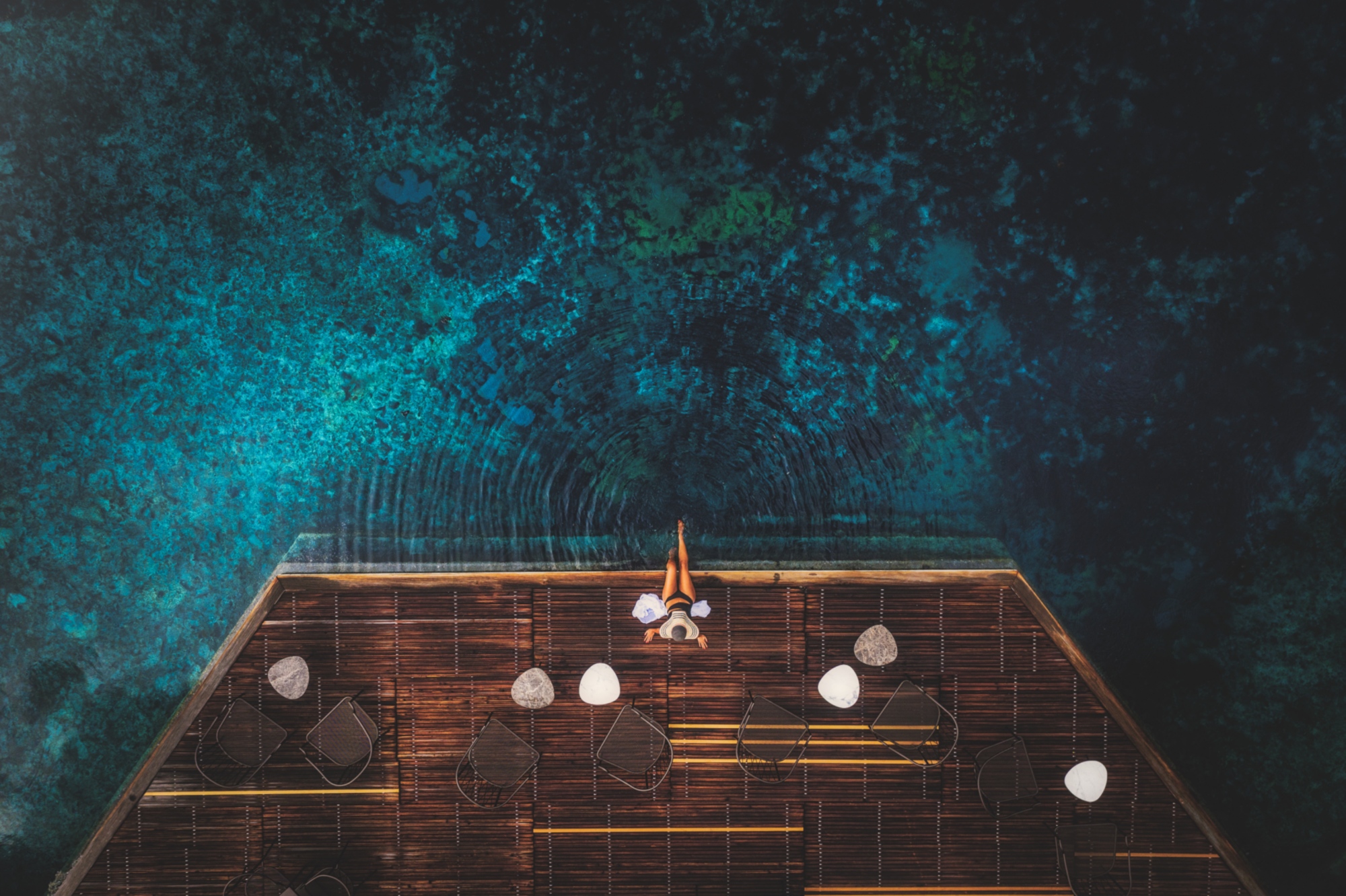
In the heart of the Maremma, at the foot of the medieval village of Saturnia is a thousand-year-old gushing spring that has made this place world-famous. Legend has it that the god Saturn created this place, with waters that continue to flow from a natural crater on the slopes of Monte Amiata at a constant temperature of 99.5 °F (37.5 °C).
The Terme di Saturnia Spa & Golf Resort complex has been created from an ancient travertine building overlooking the spring. Today, it is home to a resort, 4 thermal pools with waterfalls and hydro-massage, a spa center with more than 100 treatments, restaurants, and an 18-hole golf course set in a centuries-old park.
The nearby Fonte Pura Thermal Baths is located atop a hill overlooking the valley. Built like a small village nestled in the countryside, the facility has a sulfur thermal pool fed by its own spring, rich in mineral salts and with strong antioxidant powers.
Saturnia is then home to the Cascate del Mulino, among the most scenic waterfalls and free hot springs in Tuscany.
An ancient mill provides a backdrop for a stream of water that pours into natural travertine pools, creating open-air bodies of water that can be accessed at no cost.
Nestled among forests, pastures and tuff villages such as Pitigliano and Sovana, the spa village of Sorano offers a relaxing oasis in the heart of nature.
The complex boasts 3 swimming pools: 1 for swimming laps plus 2 thermal pools in addition to the striking “Piscina dei Frati,” dug into the rock and dating back to the 15ᵗʰ century, able to accommodate up to 15 people.
Val d'Orcia
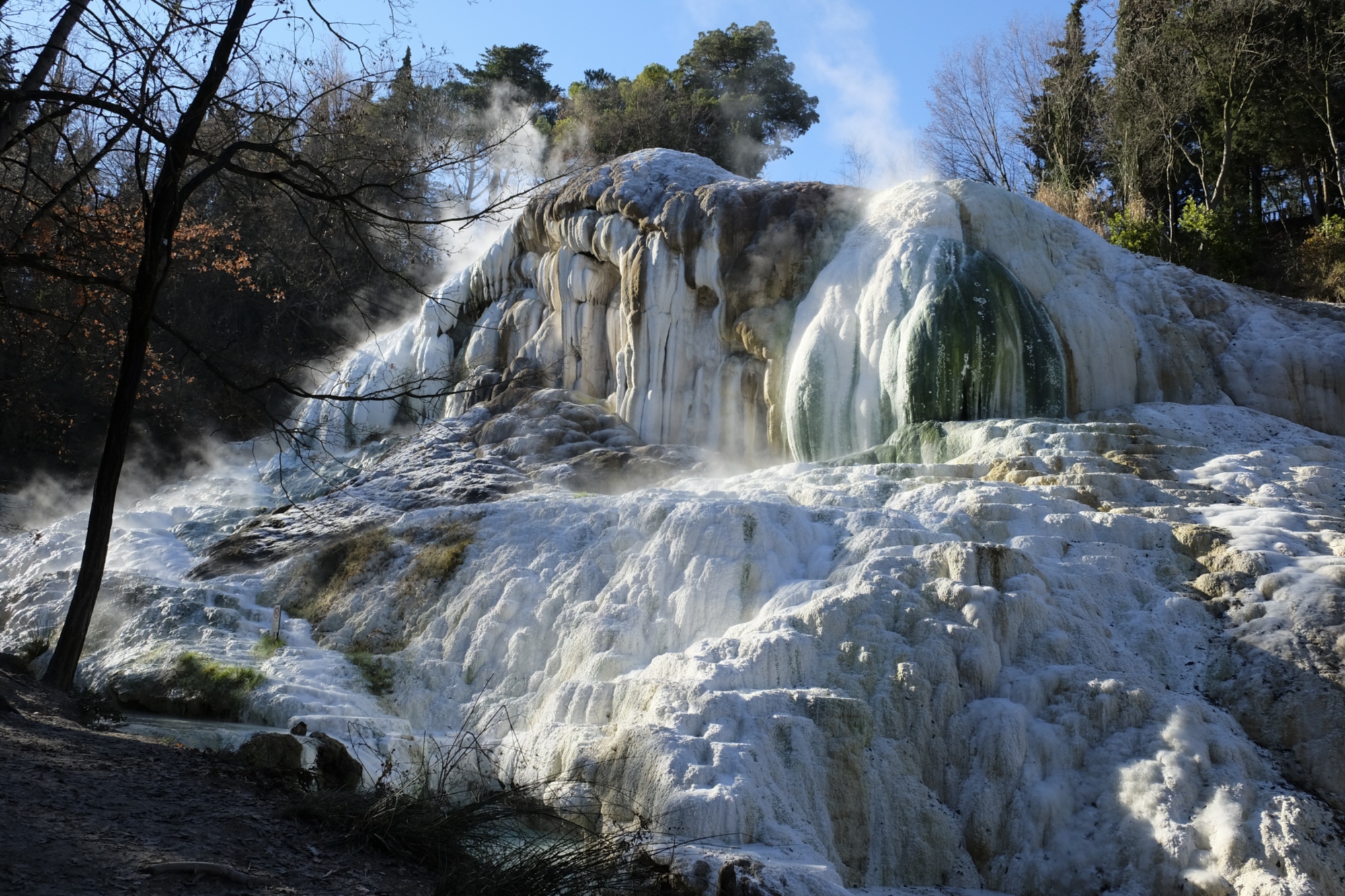
Just a few miles from San Quirico d’Orcia, along the ancient route of the Via Francigena, Bagno Vignoni is built around a truly unique square comprised of a large rectangular pool flowing with thermal springs exploited since antiquity.
The waters, which surface at about 12 °F (49 °C), were already appreciated by the Romans for their healing properties, embellished by the village’s charm that remains even today.
Although the ancient swimming pool is no longer accessible, the pleasures of bathing in thermal waters can be had at the village’s accommodations. The 3 main places are: the Le Terme Spa & Resort combining elegance and tradition in the heart of the village; the Hotel La Posta Thermal Spa with indoor and outdoor pools open to the views of the Val d’Orcia; and the Hotel Adler Thermal Baths, where you can relax in the Grotta Salina, enriched with salts from the Dead Sea.
Between the Val d’Orcia and Monte Amiata lies Bagni San Filippo, a small village known since ancient times for its hot thermal waters. In the midst of a lush forest, the water has carved out an enchanted landscape of white limestone formations, quaint waterfalls and natural pools where you can dive in for a relaxing break.
A footpath leads to the scenic Balena Bianca (White Whale), an imposing limestone block shaped by thermal water sediments. This formation is fragile and protected so you cannot touch it, but there are numerous pools in the surrounds where you can enjoy the water in total tranquility.
Valdichiana Senese
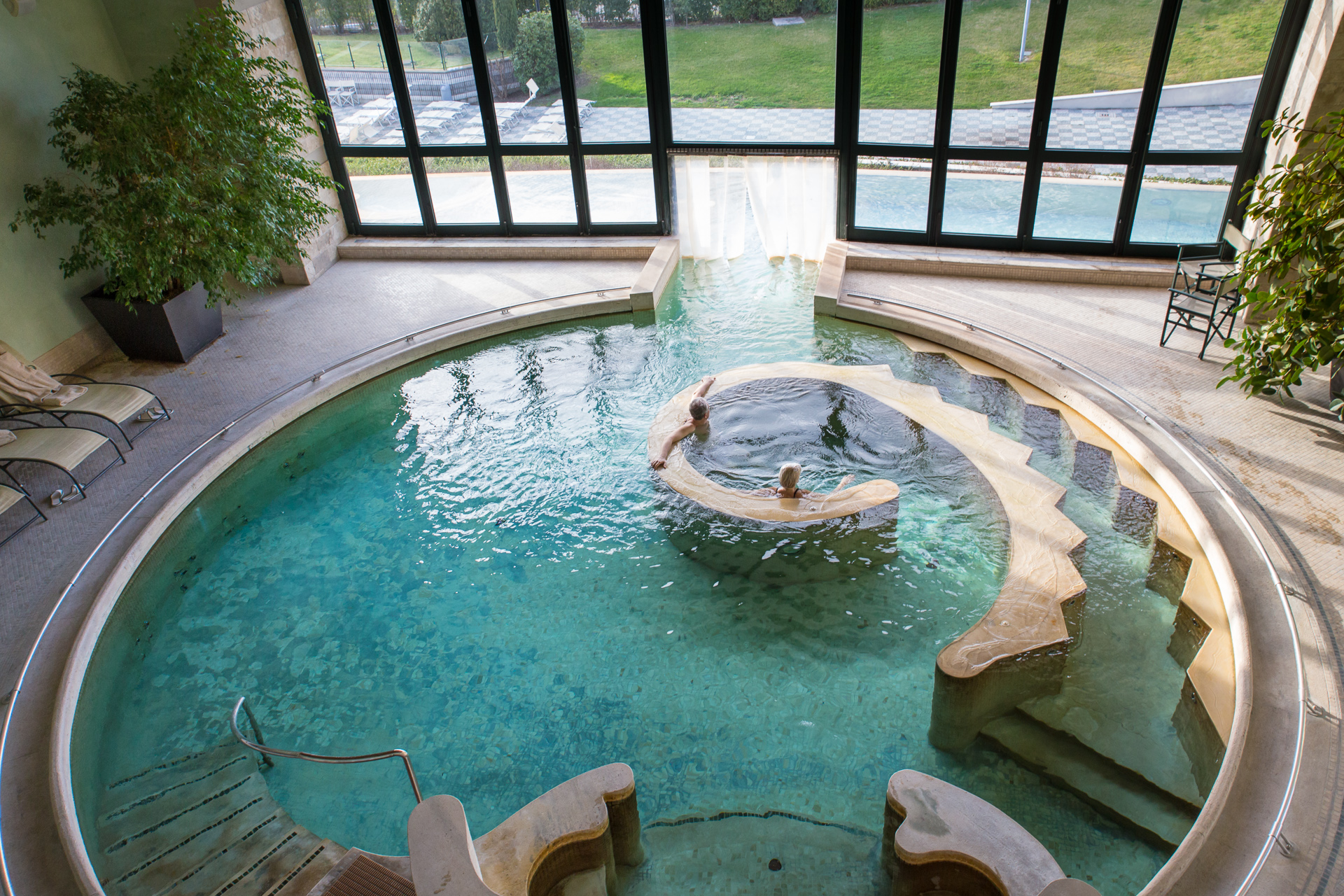
In the heart of the Valdichiana Senese, just a few miles from Montepulciano and Chiusi, the Terme di Chianciano offers one of the most complete spa experiences in Tuscany, set in an unspoiled hilly landscape. The spa complex is divided into several centers: the Terme Sensoriali inspired by Eastern philosophies, the Centro Termale Sillene dedicated to mud-balneotherapy, inhalation cures and vascular treatments, and the Piscine Termali Theia, with 4 outdoor and 3 indoor pools fed by the Sillene spring to exploit its well-known anti-inflammatory and skin-beneficial properties.
The Acqua Santa and Fucoli Parks are great places for walking and relaxing, as well as settings for cultural, sporting and recreational events throughout the year.
Deep in the Valdichiana Senese countryside, not far from Montepulciano, Chianciano, Chiusi and Sinalunga, the Montepulciano Thermal Baths was created to exalt the therapeutic properties of the waters that flow from the subsoil of this area.
A special place is the Grotta Lunare with a saline pool, designed to regain psycho-physical harmony in an evocative environment.
In San Casciano dei Bagni, an ancient village known since antiquity for its hot springs, is Fonteverde, an elegant 5-star resort created inside a Medici portico constructed in 1607 by Ferdinando I de’ Medici. Overlooking the gullies and green hills of the Val d’Orcia, the center combines history, nature and wellness in a unique atmosphere.
The pools are fed by natural springs that flow from Monte Amiata at 107 °F/42 °C, rich in calcium, fluoride, magnesium and sulfur.
The lands of Siena
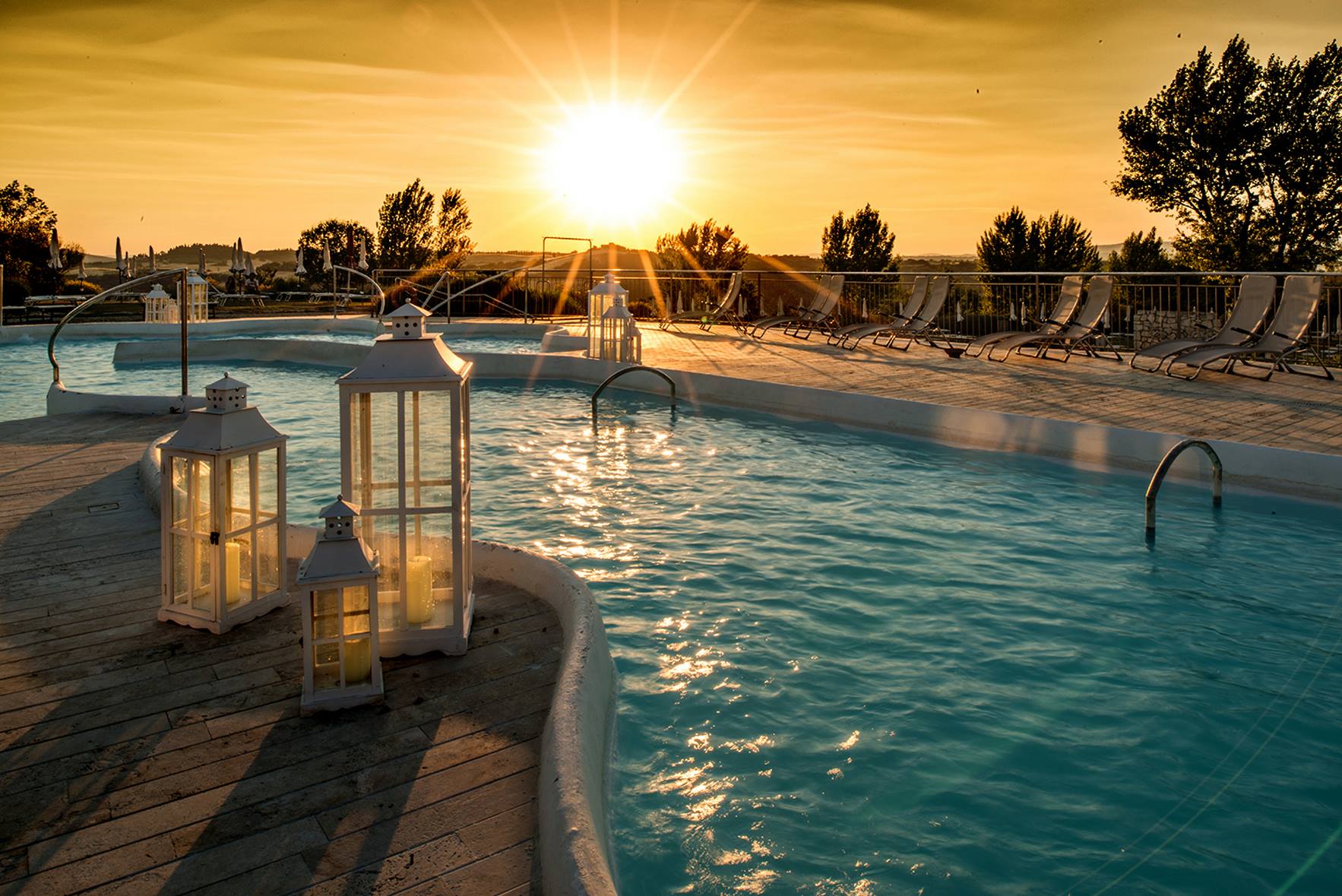
In the heart of the Crete Senesi, a few miles from Siena, Rapolano is a village famous for its springs known since ancient times. Here, the landscape of clay hills and cultivated fields combines with the wellbeing offered by waters rich in sulfur and mineral salts that feed two renowned towns.
Since the 18ᵗʰ century, the Antica Querciolaia Thermal Baths has been a landmark for those seeking health and relaxation.
The structure has both an indoor facility and a large park with 6 outdoor swimming pools.
The San Giovanni establishment combines wellness and nature in a landscape of vineyards and olive groves. Rich in sulfur and calcium bicarbonate, the waters gush out at 102 °F (39 °C) and are recognized by the Ministry of Health for their benefits to the skin and the respiratory and muscular systems.
The hot spring park houses 5 pools, including 1 indoor and 4 outdoor pools, with temperatures ranging from around 81–97 °F (27–36 °C).
In the heart of the Valle dell’Ombrone, between Monticiano and Civitella Paganico, Bagni di Petriolo is one of Tuscany’s most famous hot springs. Known since Roman times, even today, the waters can be enjoyed in any season, including the coldest months, thanks to the constant temperature of 109.4 °F (43 °C).
The natural pools are located along the Farma stream, among the lush forests of the Farma and Basso Merse Nature Reserves. Evocative remains of medieval baths and the city wall built by the Sienese in 1404 make Petriolo a rare example of a fortified thermal springs.
Next to the free pools are 2 modern establishments, the Petriolo Thermal Baths and Mercure Terme Spa, offering thermal pools, whirlpools, sauna, Turkish bath, Kneipp pathway and sensory showers.
The Etruscan Coast
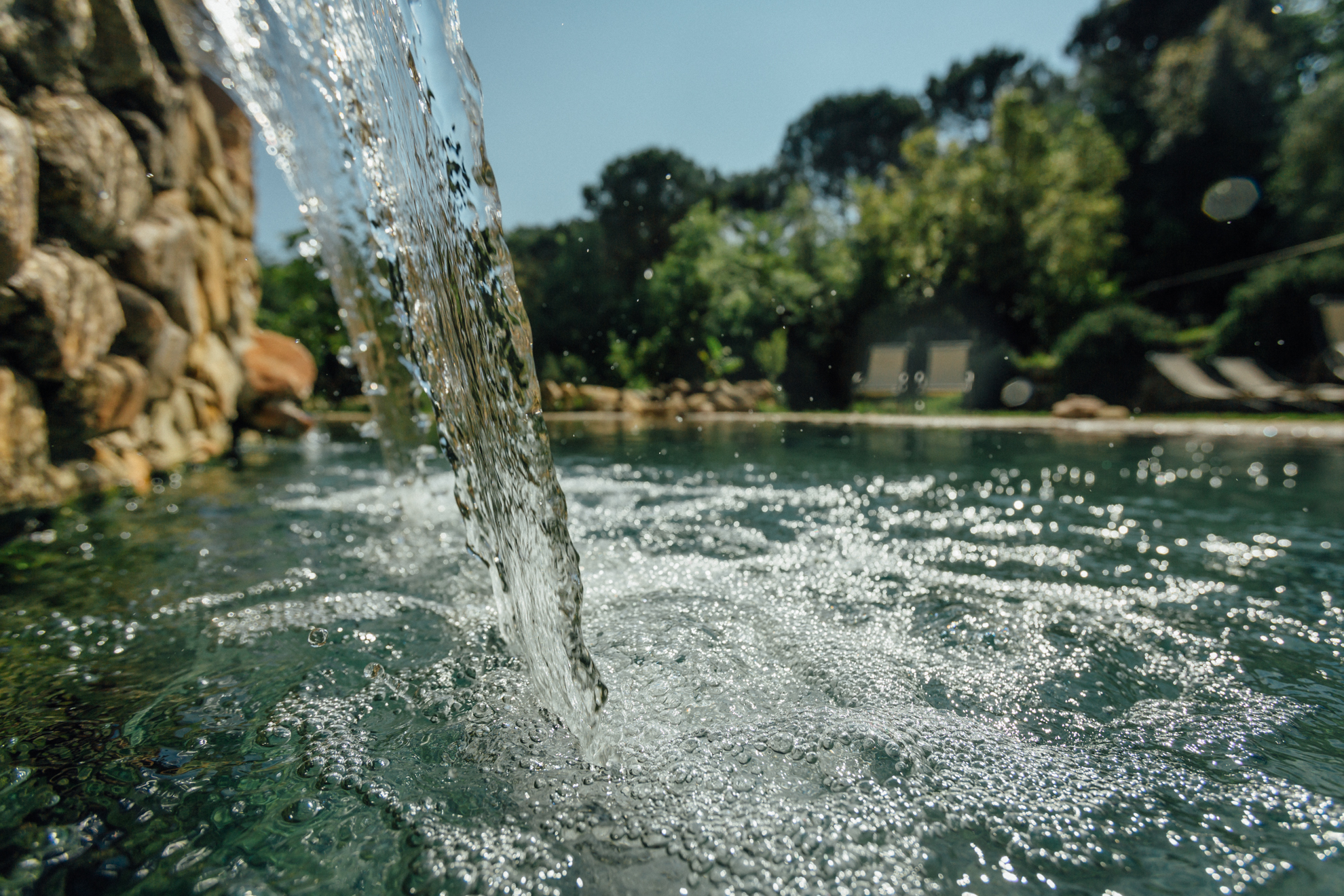
At the heart of the Etruscan Coast, Venturina Terme is a modern town with ancient roots, already frequented in Etruscan and Roman times. The spa area was known as Caldana, “hot earth,” and its sulfurous waters were known as Aquae Populoniae.
The springs gush out at 97° F (36 °C) and are rich in sulfur, alkali and minerals.
The spa, which is built around the Venturina Thermal Spa, offers a circular indoor pool and a large outdoor pool surrounded by greenery. Along with therapeutic courses, there is no shortage of packages dedicated to wellness and aesthetics.
In the valley of Pian delle Vigne, nestled in a dense forest of Mediterranean scrub, the Sassetta Thermal Spa is part of the biodynamic Agriturismo La Cerreta, a 185-acre (75-hectare) agricultural organism. The architecture of the pools is reminiscent of ancient Etruscan and Roman baths, while the thermal water flows from an underground basin at 124 ° F (51 °C).
The spa path offers a complete experience thanks to a 100 °F (38 °C) indoor pool with whirlpools and waterfalls, 2 outdoor pools at 97° F (36 °C) and 93° F (34 °C), as well as a river stone steam bath, emotional showers, aromatherapy bio-sauna and Kneipp pathway.
Valdinievole

Montecatini Terme is a place where city and spa live in perfect symbiosis. Large parks, the village of Montecatini Alto, elegant palaces and trendy clubs accompany the hot spring experience, rendering the town an international benchmark for wellness.
The springs flow hot from below ground and are classified as saline-sulphate-bicarbonate-sodium.
Even today, those who visit the village can breathe in the refined atmosphere of the Belle Époque in historic establishments such as the Caffè delle Terme, Locanda Maggiore and the Portici Gambrinus.
Nestled in the hills of Valdinievole, the Monsummano Terme holds a unique natural treasure: the Grotta Giusti, once called by Giuseppe Verdi “the 8ᵗʰ wonder of the world.” The 1000-year-old cavity stretches more than 200 meters underground, with striking halls adorned with stalactites and stalagmites, evoking the Dante’s 3 realms of Hell, Purgatory and Paradise.
At the base of the cave flows a crystal-clear mirror of thermal water at 97° F (36 °C), releasing a healthy, detoxifying steam, a “natural sauna” that envelops the body and regenerates the spirit. Scuba diving enthusiasts can experience the thrill of being submerged in the thermal cave, accompanied by specialized instructors.
Outside, the centuries-old park surrounding a villa once owned by the family of poet Giuseppe Giusti now houses an elegant resort with a large thermal pool at 35 °F (35 °C), a scenic waterfall and 40 hydro-massage stations.
Garfagnana and the Media Valle del Serchio

Known since Roman antiquity, the hot springs of Bagni di Lucca became famous in the 11ᵗʰ century, during the time of warrior-countess Matilda of Tuscany, reaching their peak in the 19ᵗʰ century when transformed into one of the most elegant spas in Europe.
The village, dubbed the “Switzerland of Tuscany” by the British, was long an elite destination in European tourism—a place beloved by poets, musicians, writers, politicians and pontiffs.
The springs flow from the slopes of Colle di Corsena enriched by their beneficial virtues.
The Bagni Bernabò establishment retains its 19ᵗʰ-century charm with cabins equipped with marble baths and a striking Grotta di Vapore (Steam Grotto), where heat and humidity combine for a rejuvenating experience.
The lands of Pisa
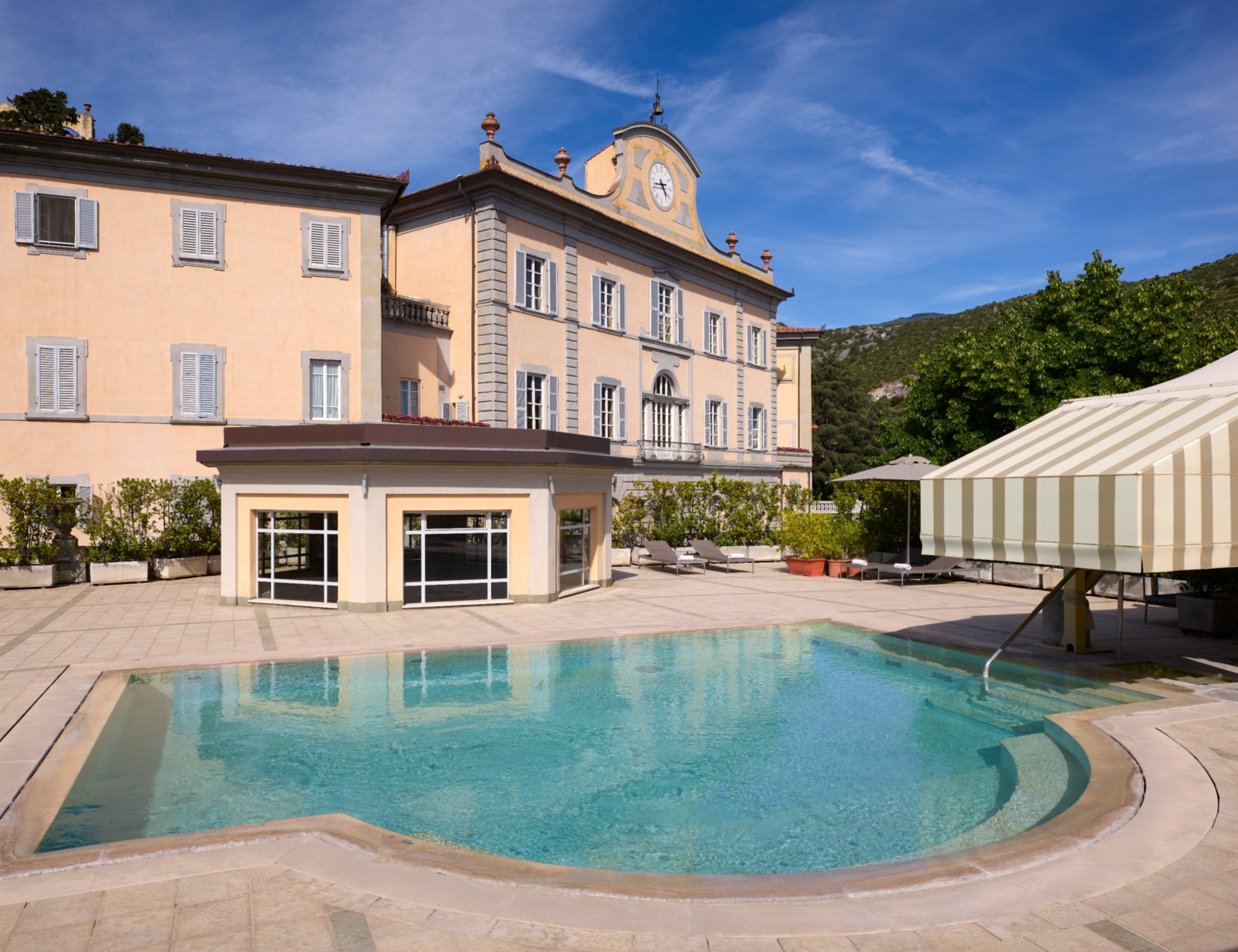
At the foot of the Monti Pisani, in San Giuliano Terme, the Bagni di Pisa Thermal Spa has been exploited since Etruscan and Roman times.
The hot springs were soon transformed into one of the most exclusive salons in Europe, frequented by nobles and intellectuals such as Paolina Bonaparte, Vittorio Alfieri, Carlo Goldoni, Percy and Mary Shelley ... Legend has it that this was where the famous writer found the inspiration for her character Frankenstein.
The waters gush out at 100 °F (38 °C), rich in calcium, magnesium and bicarbonate.
The establishment, divided into Bagni di Levante and Bagni di Ponente, combines tradition and innovation in its indoor and outdoor pools, therapeutic treatments and multi-sensory pathways. Not to be missed is the impressive Grotta dei Granduchi, a natural cave with 104 °F (40 °C) spring water and steam bath carved into the rock.
Apuan Riviera
In Cinquale di Montignoso, just a few miles from Forte dei Marmi, the Versilia Thermal Baths sprung from the discovery of a precious salt-bromine-iodine water and a natural peat deposit. A unique spa nestled between the sea of the Apuan Riviera and the peaks of the Apuan Alps.
The water streams out at 63 °F (17 °C), the result of the meeting of mountain waters and ancient marine deposits.
The spa, set in a large garden, offers a swimming pool, wellness center, hotel and restaurant.
Known since Roman times, the San Carlo spring owes its name to Bishop Charles Borromeo of Milan who, in the 16ᵗʰ century, suffering from kidney stones, drew benefit from drinking this water during a stay in Massa.
The San Carlo Thermal Park extends among historic fountains, aromatic gardens and green paths where water from the Aurelia Spring flows. Originating from the Apuan Alps, a UNESCO World Heritage Site, this oligomineral water emerges at a temperature of 55 °F (12.8 °C), offering a purifying and detoxifying action.
Lunigiana
Along the northern edge of the Apuan Alps, at the foot of the picturesque village of Equi, are the Equi Thermal Baths, known since Roman times and systematically exploited since the 19ᵗʰ century with the construction of the historic establishment commissioned by Engineer Carlo Tonelli.
The hypothermal waters gush out at 73.4 °F (23 °C).
Open from June to October, the thermal park is structured across two floors, with the ground floor housing the inhalation treatment areas, while the second floor houses the balneotherapy and sauna areas. 2 thermal pools (including a kid’s pool) and the Hotel Terme di Equi complete the offer.
